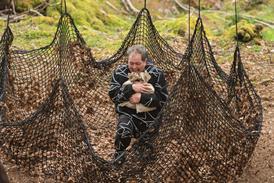Following similar services launched in the past two months by Pepper, Onsight and Axis Films, The Mill's lab services will include shoot attend, digital dailies, raw conversions and data back-up.
It was inaugurated largely as a response to the recent surge in interest from producers wanting to use digital cameras such as the Red One.
The Mill head of telecine Andy Orrick told Broadcast that the thirst for data acquisition projects was growing fast, with 70% of the digital files they are working with being captured on Red One cameras.
“We are now dealing with five digital jobs a week compared with two every two or three weeks in January,” he said. “These Red shoots are no longer just music videos and promos but high-end commercials. We'll also be dealing with a long-form independent feature film later in the year.”
Orrick suggested that the financial benefits for short-form projects to be captured on data, with data lab services, were significant. “We calculate that processing for digital is currently one-third of that of film and it is likely to go down further overtime,” he said.
HD facility Onsight has also seen an increase in demand for data services over the past six months and deals with between five and 10 digital projects a week. Six months ago it was dealing with just three. Head of engineering Richard Mills said that roughly 50% of the projects his company manages were Red-based.
Although the recent launch of Red's software development kit will allow traditional facilities companies to manage Red workflows using Red-supported editing and finishing systems, Mills argued that there is more to it than software conversion.
“You need considerable processing power to be able to convert and manage these files,” he said. “Although there have been a crop of companies offering these services recently, the processing power required can be a barrier to entry into this market.”
However, Pepper managing director Shane Warden warned that while data acquisition was viable for short-form work, long-form capture on digital cameras remained very difficult.
“A 90-minute drama shot on digital would require 10 terabytes of media,” he said. “To handle a season of 200 dramas we would probably have to provide 2 petabytes, probably more storage than is offered by all the drama post houses in London.”
Axis Films was unavailable for comment at the time of going to press.

























No comments yet